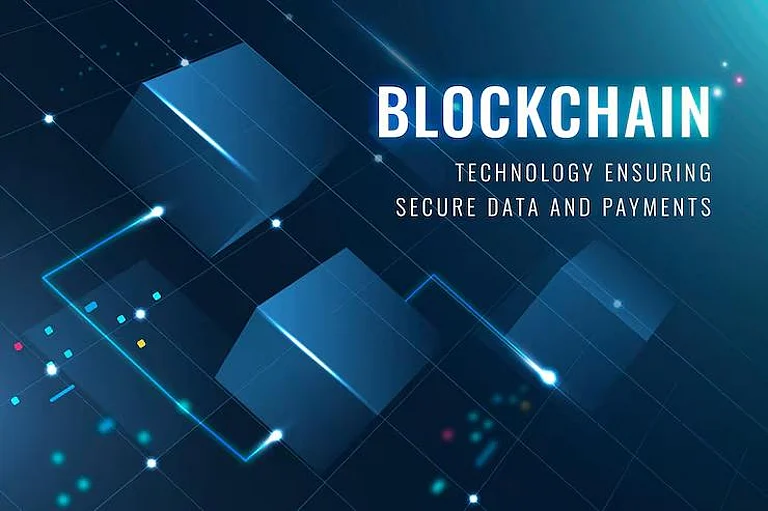The digital age is currently undergoing a pivotal shift, away from centralized platforms to decentralized, user-governed networks. It has also been spoken about in popular media as Web3—a term that embodies the vision of an emerging internet in which people take back control of their online personas, holdings, and information. Blockchain technology is leading the revolution. Blockchain is more than a facilitating system for cryptocurrency; it is the foundation on which Web3 exists. Blockchain establishes a decentralized system that renders the old centralized systems obsolete, offering transparency, autonomy, and security at every digital level of interaction. As society becomes ever more interconnected and digitized, blockchain becomes a central force in redefining the way transfer of trust and value occurs in the digital sphere.
What is Web3?
Web3, or the "decentralized web," is the next version of the internet. Web1 was read only, Web2 allowed users to read and write but remained controlled by large tech, and Web3 is about decentralization, user control, and peer-to-peer. Users are not the product anymore under this model; they're stakeholders in the network. Web3 seeks to remove middlemen so that users can transact with digital services directly. It gives individuals control and authority over their data, content, and identity on the web through technologies like blockchain, smart contracts, and decentralized protocols. It's not a technological change but an ideological shift towards an internet based on freedom, openness, and participation.
Blockchain: The Backbone of Web3
Blockchain technology constitutes the foundation of Web3, being the distributed ledger that stores and authenticates all transactions and activity on a network. Rather than information being stored in one server under one authority, blockchain stores information in thousands of nodes where each node has a copy of the ledger current. Decentralization keeps data from being manipulated, offers security, and allows for transparency throughout the system. Each transaction on a blockchain is secured with cryptography, time-stamped, and published for all parties to see, making it nearly impossible to change historical records. This provable and tamper-evident infrastructure gives Web3 the trust necessary to operate without central control. Blockchain effectively allows for a new kind of digital architecture—one in which code enforces rules and technology instills trust instead of institutions.
Important Roles of Blockchain in Web3
Maybe the most revolutionary aspect of blockchain on Web3 is the ability to render trust in intermediaries unnecessary. On current conventional digital infrastructure, consumers give their data to third-party entities—banks, social media platforms, cloud computing—to store and protect it. Blockchain offers trustless systems, where security and verification are handled by code and consensus and not humans. This makes transactions more efficient, secure, and ubiquitous.
Ownership of data is another critical blockchain function. With decentralized keys and identifiers, individuals hold their own digital identity in its entirety, which can be shared between platforms without subjecting private information to centralized power.
In addition, interoperability occurs because of blockchain open standards that enable free interaction between various decentralized applications (dApps) and networks. This shatters Web2 silos and creates a more integrated and collaborative web.
Finally, blockchain enables token economies—new virtual societies where tokens can denote ownership, worth, or privilege. Tokens reward users, facilitate decentralized rule-making, and underpin new financial models, from play-to-earn games to decentralized finance (DeFi).
Revamping Digital Governance
Web3, thanks to blockchain, is actually transforming the way digital platforms are governed. Centralized paradigms of leadership are how traditional web sites operate, with choices being made by a small number of stakeholders. Blockchain allows for Decentralized Autonomous Organizations (DAOs), which are shared entities that are governed by smart contracts. They impose open rules and allow for collective decision-making through token-based voting mechanisms. The users can vote on, propose, and make changes to the system in a way that power is distributed and participatory.
This redefinition of governance brings the internet closer to democratic government, since communities get to have a say in how the platforms they're using are governed. It offers a very high degree of transparency, where all the decisions made regarding governance are recorded on the blockchain and hence can be publicly auditable and verifiable. Through DAOs and other decentralized decision-making mechanisms, Web3 aims to create ecosystems which cannot be gamed, are aligned with the values of the community, and are attuned to users' needs.
Security and Transparency
Security is among the most important pillars of blockchain technology and one of the main reasons why blockchain is well-suited to drive Web3. Compromise of data, censorship, and abuse are the standard in conventional systems because centralized control is present. Blockchain provides tamper-proof records were information, after being added to the chain, cannot be altered or erased without the network's approval. This aspect significantly limits tampering and fraud.
Secondly, blockchain ensures transparency in the sense that it ensures all activity and transactions can be validated in the public eye. Such transparency generates trust from users and accountability in the sense that it becomes impossible to tamper with outcomes or hide decisions. In exchange of money, tracing the supply chain, or voting systems electronically, blockchain ensures the users have end-to-end visibility and control.
In addition, advanced cryptography methods and consensus algorithms secure the network from outside threats, and smart contracts securely automate procedures. Security is never an afterthought in Web3 but a design principle based on blockchain.
A New Internet Infrastructure
Web3's blockchain-based emergence is a paradigm shift away from the existing internet architecture. Rather than power resting in the hands of a few center powers that control access to information, blockchain is welcoming to a permissionless and censorship-free digital space. Developers are able to develop dApps without having to seek permission from central powers, and users are able to participate without the threat of deplatforming or spying.
Blockchain also makes global inclusion possible, offering financial and digital inclusion to previously excluded people in the formal economy. With decentralized finance or DeFi, even customers without access to mainstream banking can save, lend, or invest using nothing more than a smartphone and an internet connection.
Moreover, blockchain establishes permanence and provenance, enabling creators and companies to see origin, ownership, and history of digital assets—crucial in art, music, gaming, and intellectual property markets.
This new architecture is stronger and more secure but also planned to change over time with contributions from the community, so it is flexible and creative without losing fundamental principles.
Conclusion
Web3's arrival is not only a fresh tech cycle— Web3 is an articulation of an underlying philosophical shift towards digital autonomy, openness, and collaborative control. Blockchain is as much a facilitator for this transformation as it is the technology that makes it possible. Power decentralized, digital assets protected, peer-to-peer trust formed, new modes of governance and economy enabled, blockchain lies at the core of all that Web3 represents.
As the globe enters this new digital age, the role of blockchain will only get bigger. Not just the future web platform, but also a remaking of power, trust, and value distribution on the web. With Web3, blockchain makes everyone more accessible to a more inclusive, innovative, and equitable digital world—where users are not merely consumers, but actual owners and builders of the web.

























